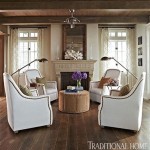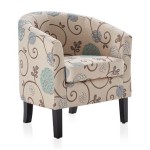Ideas for Small Living Room Layout
A small living room can be a challenge to furnish and decorate, but with the right layout and design choices, it can be transformed into a comfortable and inviting space. The key is to maximize functionality and create a sense of spaciousness. There are many different layouts that can work well in a small living room, depending on the shape of the room, the furniture you have, and your personal preferences. Here are some ideas for small living room layout, along with tips for choosing the right furniture and decor:
Maximize Natural Light
Natural light can make a small space feel bigger and brighter. If your living room has windows, make sure to keep them uncovered as much as possible. You can also use mirrors strategically to reflect light and create the illusion of more space. For example, a large mirror placed behind a sofa can make the living room feel deeper. Consider a light, airy color scheme to further enhance the feeling of spaciousness.
If your living room is lacking in natural light, you can use artificial lighting to create a similar effect. Consider using a combination of overhead lighting, lamps, and accent lighting to create a layered look. This will help to create a warm and inviting atmosphere, while also highlighting the features of the room.
Choose Multifunctional Furniture
One of the best ways to save space in a small living room is to choose furniture that serves multiple purposes. For example, a sofa bed can be used as a sofa during the day and a bed at night. A coffee table with storage can be used to store books, magazines, or other items. Choose furniture with built-in storage solutions to maximize space. Ottomans can serve as seating, extra storage, or footrests, making them a versatile choice for small living rooms.
Consider investing in furniture with a smaller footprint. Narrow consoles or sideboards can replace bulky furniture like dressers, offering storage without taking up too much floor space. Opting for chairs with slender frames and smaller armrests can also contribute to a more spacious feel compared to bulky armchairs.
Create a Focal Point
A focal point can help to draw the eye and create a sense of interest in a small living room. This could be a fireplace, a piece of artwork, a well-placed mirror, or a unique architectural feature. Even a beautifully adorned bookshelf or an eye-catching display of plants can create a focal point. Use furniture placement and lighting to draw attention to your focal point. A sofa placed directly opposite the focal point will naturally draw visitors' eyes to it, while strategically placed lamps can cast light and emphasize its importance.
When choosing a focal point, consider the size and shape of your living room. A large fireplace will be a focal point in any room, but a smaller space might benefit from a more subtle focal point, like a beautifully decorated wall or a unique artwork.
Define Areas with Rugs
Rugs are a great way to define different areas in a small living room. For example, you can use a rug to define the living area, the dining area, or the reading area. Choose rugs carefully to avoid making the room feel smaller. An oversized rug can make a space feel larger and more cohesive. A rug with a light, airy pattern can contribute to a sense of spaciousness, while a bold patterned rug can create a focal point and add visual interest.
Use rugs to create a visual connection between different areas of the room. For example, if your living room has a dining area, use a rug to connect the two spaces. This will help to create a sense of flow and continuity in the room.
Use Color Strategically
Color can have a big impact on the size and feel of a room. Light colors, such as white, cream, and pale blue, can make a small space feel larger. Light colors reflect more light, creating a sense of spaciousness. Dark colors, on the other hand, can make a space feel smaller and more intimate.
Use color to create a sense of depth and dimension. Painting one wall a darker shade can make the room feel longer, while a lighter shade on the opposite wall can enhance the feeling of spaciousness. Consider painting a small accent wall a bolder color as a focal point, while using lighter colors for the rest of the room. This can add visual interest without overwhelming the space.
Keep It Clutter-Free
One of the best ways to make a small living room feel bigger is to keep it clutter-free. Clutter can make a space feel cramped and chaotic. Get rid of anything you don't need or use. Organize the items you do keep, and store them in baskets, bins, or other storage solutions. Keep surfaces clear to avoid visual clutter.
Consider using vertical space for storage. Shelves, wall-mounted storage units, and floating shelves can be used to store items without taking up valuable floor space. This is particularly helpful in small living rooms, as it allows you to keep your belongings organized and out of sight.
By optimizing the use of space, playing with color, and minimizing clutter, small living rooms can be transformed into functional, stylish, and welcoming spaces. Remember, the key is to prioritize functionality and create a sense of spaciousness. With the right layout and design choices, even a small living room can be a place where you can relax, entertain, and enjoy your time.

Small Living Room Layout Ideas Homes And Gardens

How To Arrange Furniture In A Small Living Room Setting For Four Interiors

37 Small Living Room Ideas For A Cozy Common Area Architectural Digest

Small Living Room Ideas Decorating Tips Coastwood Furniture

10 Small Living Room With Tv Ideas That We Want To Copy Asap

4 Need To Know Tips For Decorating A Small Space

Top 10 Ideas On How To Decorate A Small Living Room Decorilla Online Interior Design

25 Small Apartment Living Room Ideas For A Cozy Home Makeover

Small Living Room Layout 8 Design Tips

16 Designer Small Living Room Ideas With Tv Havenly Blog Interior Design








